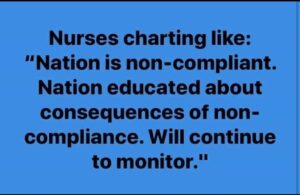Though the cause is not given, a state investigation of a recent death in the hospital of a patient there for withdrawal management treatment found that the staff assigned to check on the patient “did not follow established facility policy and procedures.” (https://www.inquirer.com/health/eagleville-hospital-pa-patient-death-20240207.html)
It’s difficult to say whether death rates in behavioral health facilities in the USA are definitively rising due to several factors:
- Lack of Comprehensive Data: There’s no centralized, standardized system for tracking deaths in behavioral health facilities nationwide. This makes it hard to get a reliable picture of overall trends.
- Varying Reporting Standards: States differ in how they collect and report death data within these facilities. Some might have stricter reporting requirements, skewing comparisons.
- Complex Causes of Death: Deaths in behavioral health settings can stem from various causes – suicide, underlying medical conditions, overdoses (accidental or intentional). Isolating a specific trend attributed to the facility itself is challenging.
However, there are indicators suggesting cause for concern:
- Increased Need: The growing mental health crisis in the US puts more strain on behavioral health facilities. This can potentially lead to capacity issues and impact care quality.
- Vulnerable Populations: These facilities often serve high-risk individuals, who might be more susceptible to suicide or have underlying health conditions.
Regulations regarding patient monitoring in behavioral health facilities are not uniform across the US and involve a complex interplay between federal and state regulations, accreditation standards, and individual facility policies. Here’s a summary of key aspects:
Federal Level:
- The Centers for Medicare & Medicaid Services (CMS) regulates hospitals through its Conditions of Participation (CoPs) for hospitals. This includes requirements for patient assessment, safety plans, and ongoing monitoring, but doesn’t specify specific types of monitoring.
- The Joint Commission, an independent accreditation organization, sets standards for behavioral health facilities. Their National Patient Safety Goals (NPSGs) for Behavioral Health Care and Human Services address specific requirements for monitoring high-risk patients for self-harm (suicide, self-mutilation). This includes continuous one-on-one observation (1:1) in certain situations.
State Level:
- Individual states often have their own regulations and licensing requirements for behavioral health facilities. These can address specific monitoring practices and frequency, potentially exceeding federal minimums.
Accreditation Standards:
- Accreditation organizations like The Joint Commission have their own standards that can provide additional guidance and requirements for monitoring, often exceeding federal minimums.
Facility Policies:
- Each facility can further develop its own policies and procedures for monitoring patients, based on the patient’s specific needs, risk assessments, and applicable regulations and recommendations.
It’s important to remember that these are just general points, and the specific regulations and requirements can vary based on several factors, including the type of facility (inpatient, outpatient), the patient population, and the state location.
At all levels of the healthcare system, addressing this issue requires a multifaceted approach focusing on improved risk assessment, comprehensive medical care integration, enhanced staff training, and greater emphasis on prevention strategies.
In developing a policy, hospital administrators will make a general policy statement, such as: Any patient identified as a risk for harm and is placed on special precautions will be monitored more often to ensure his or her safety.
Specific procedures may include:
- A registered nurse may initiate or increase the level of special precautions as indicated. A practitioner’s order is required to decrease or discontinue an observation status.
- The nurse will assess the needs of the patient and assign the most appropriate staff member to monitor the patient.
- The assigned staff member will initiate the Observation Record, and in collaboration with the nurse completes the date, observation status, reason for intervention.
- Implementation of all special precaution observation levels includes:
- A modification of the Treatment (Recovery) Plan to reflect patient’s behaviors and staff interventions.
- An explanation by the nurse of the special precaution’s purpose to the patient.
- Completion of a DAP note by the nurse in the EMR summarizing the patient’s behavior, use of special precautions as an intervention and the patient’s response.
- If the patient cannot be located at specified time, immediately notify the Acting Nurse Administrator, or designee.
- Levels of monitoring often include:
- One to One (1:1) – A patient on a 1:1 must be at arm’s length at all times.
- Every 15 minutes – The patient must be seen every 15 minutes.
- Every 30 minutes – The patient must be seen every 30 minutes.
The policy usually also specifies requirements for monitoring a patient on a one-to-one basis. These include:
- Constant visual contact with the patient.
- Obtaining a two-way radio from Campus Safety.
- Searching the room and removing items with potential for self-harm.
- Searching the patient to ensure there are no items that pose a threat to safety.
- Placing the patient in a single room whenever possible.
Technology is rapidly transforming how mental health professionals observe and monitor patients in psychiatric facilities. Tools like wearable sensors can track vital signs, sleep patterns, and activity levels, providing continuous data for healthcare providers. Additionally, video monitoring systems with advanced analytics can detect potential self-harm or aggressive behavior, enabling earlier intervention.
While these advancements offer valuable insights and potentially improve patient safety, ethical considerations surrounding privacy, data security, and potential misuse of technology remain crucial aspects to address in this evolving landscape.
In the meantime, and as always, behavioral health providers act as crucial bridges between individuals and the specialized support they need. They wield a powerful combination of compassion and expertise. This compassion allows them to truly connect with their clients on a human level, creating a safe space for vulnerability and honest expression. Their skill lies in using evidence-based practices to understand and address the unique challenges each person faces while emphasizing and fully utilizing the strengths and resiliency inherent to each.








